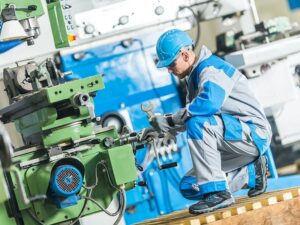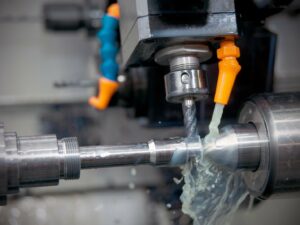Proper maintenance is vital for every machine tool to ensure they last long. Whether you perform the maintenance on operational components, machines motor, or specific attachments. It is vital to have routine checkups. Industrial parts are extremely important parts of a machine, and they all need to function together for the machine to work effectively. Therefore, maintenance cannot be stressed enough for the last thing you would wish to happen is improper maintenance causing your machine to break down. Here are tips and steps that will help you perform proper maintenance check up on your machine tools.
1. Adhere to specific instructions of the tool
Each machine tool you have has various guidelines you must adhere to as you maintain and take care of them. Follow these guidelines religiously as you clean your equipment. If not, you may affect how best they work or end up with potential harmful repercussions. Different manufacturers have different instructions on how best to follow certain procedures as part of the maintenance for the machine tool to work effectively. Therefore, ensure you are familiar with the manual before you touch any piece of a machine tool to work with. As all instructions for cleaning, storage, sharpening, and more are in the manual.
2. Check the lubrication
If you use your machine tools frequently, you must inspect the lubrication levels of the machine at least on a weekly basis. When you are sure the moving parts are well lubricated, in this way, you protect the motor over an extended period. This includes oiling and greasing of moving parts and do a visual inspection of all parts movements while the machine is in operation. When the grease or oil is not the right amount, any machine tool will face wear and tear. This could lead to extreme damage or the breaking down of the machine.
3. Check alignment specifications
No one wants to deal with a machine tool that has a particular attachment or component, not in proper alignment. This greatly affects the work quality negatively. To check if your machine tool is well aligned, perform few test jobs to see how it functions and measure the resulting parts to check how the equipment is working currently. Where the alignment is off, you will have to do a proper alignment to maintain specifications that are accurate for the machine tool.
4. Sharpen important components
Every machinery is designed differently, if the machine tool is designed for slicing, cutting, chopping or sharpening, you have to ensure that the components are sharp enough to work effectively. Lack of proper routine maintenance on the specific parts, which need to sustain specific sharpness, may result in putting production quality at high risk. Plus, the sharpness of a machine tool is vital for you to need to make sure that the cut materials are shaped in a correct and accurate manner. This includes checking the sharpness of tools like manual lathes, end mills, drill bits, and precision cutters.
5. Inspect cleanliness
Although this is an obvious thing to do, you need to ensure your machine is properly cleaned regularly. Have a routine cleaning schedule, in this way, you can clean various pieces of equipment daily or weekly. This will ensure that the equipment is running at maximum capacity. Most people take the cleanliness of a machine for granted and overlook it when a specific part of the machine tool breaks down. As an example, if your machine begins to rust or collects a lot of grime, long-term problems will begin to appear.
To sum up, to properly maintain your machine tool, ensure you perform routine maintenance checks on all accessories and components. Importantly, ensure that all the accessories and parts are stored and handled responsibly. Plus, you do not want to be careless with any part of your mechanical equipment. Therefore, use all your senses to detect any potential issues, a strange smell, unusual vibration and odd sound all these could mean trouble. If it is detected early on, you can easily take care of it. To optimize this process, have a checklist and carefully log all the maintenance that is performed.









